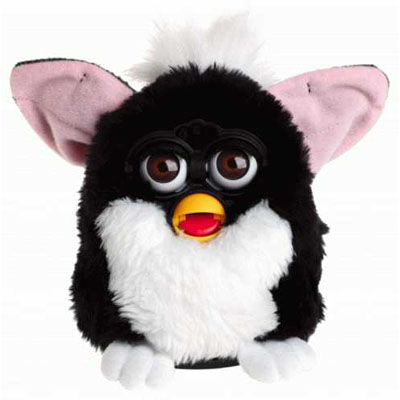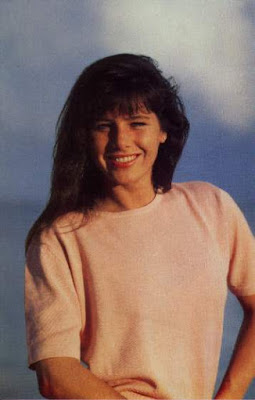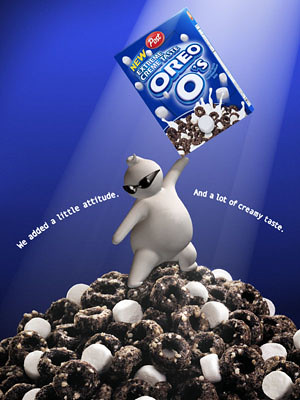
Technology can be useful in mainly outlets. Growing technology has enabled us to add efficiency to production, precision to medical procedures, and expedite worldwide communications.
It can also make Furbies.
Popular science fiction books and movies would lead us to believe that robots are up to no good, and we've yet to see evidence to the contrary. I'm always nervously eying my Roomba vacuum, convinced it has a vendetta against me for accidentally feeding it so many carpet-based bobby pins. Sure, we've seen are a few kindly fictional robots in the mix (a la Rosie from the Jetsons), but generally we're taught that these robots want nothing more than to overtake us and render us terrified and useless.
Under close examination of a Furby, you'll likely find this scenario morphing into a frightening--though admittedly adorable--reality.
Declared the hottest toy of 1998 season, I was probably past the target age for these fluffballs but I was fascinated by their existence nonetheless. Here I was, thinking we were years off from the technology for a fully interactive robot buddy and suddenly, it shows up on toy store shelves speaking Furbish. Parents actually engaged in physical combat to secure Furbies for their loved ones, if that gives you any idea to just how desirable an in-house interactive robot was. It seemed that children everywhere wanted one, but no one had a clue what exactly these things did.
The lifeblood of a Furby is in a computer chip embedded in its fuzzy amorphous form, and it had several relatively clever functions. The thing itself was pretty unnerving. It was cheek-breakingly cheerful and alarmingly reactive to the world around it. Never before had a toy been equipped with the technology to hear, speak, move, and most notably learn. Meanwhile, I was out there accidentally starving Happy Meal Tamagotchis left and right, and felt generally ill-equipped to deal with such a needy toy.
In the Furby Care Guide, the Furbster himself is introduced as follows:
Hey! I’m FURBY! The more you play with me, the more I do!
I love to play and can tell you jokes, play a game, sing and even dance!
Bring me home today and I’ll be your best friend!
I don't know about you, but to me that sounds horribly, terribly, wince-inducingly frightening. That whole "Bring me home today and I'll be your best friend!" part is probably the creepiest thing I could imagine a toy saying to me. The whole thing reeked of Gremlins, and I knew I couldn't be trusted with one for fear of banishing it to a microwave-explosion fated doom.


Furby v. Gremlin
In general, the idea of having any sort of playmate with an on/off switch is a bit disconcerting. There was a sort of dichotomy behind those big, bulgy doe-eyes; in one sense, the things seemed cute and cuddly, but I had visions of it summoning legions of its Furby friends and storming my house, Bastille style.
They were, after all, oddly lifelike for something so foreign-looking. It had touch and auditory censors, enabling it to react to your tickling and verbal commands. The Care Guide claims that Furbies will pick up language in a manner similar to a human child, but in reality it was only capable of absorbing English. The Guide explains:
About My Personality
I speak Furbish®, a magical language common to all FURBY creatures. When we first meet, this is what I’ll be speaking. To help you understand what I’m saying, please use the Furbish® - English dictionary found in the back of this book. I can learn how to speak English by listening to you talk. The more you play with me, the more I will use your language.
I'm sorry, but if that's not one of the scariest things you've ever heard from a toy, then you obviously have suffered some serious childhood toy-related trauma. The instructions with this thing were so comprehensive, you sort of have to wonder how any children managed to play with them at all.

In case you were hoping to brush up on your Furbish, here's a handy little Furbish-to-English guide from the Furby Care manual:
If FURBY asks you a question, say either:
Yes [ee-tay]
Ok [oh-kay]
Yes, please [ee-tay-doo-moh]
No [boo]
No, thank you [boo-doo-moh]
No way [dah-boo]
I don’t understand*
* If you couldn’t understand what I said, I’ll repeat what I last said to you. I may say it a little bit differently, with more English, so that you can understand it better. If you tell me “I don’t understand” too many times, I’ll get sad and frustrated. Sometimes it’s best to be polite and pretend you understand – at least until I learn more of your language!
That last tip is probably the most frightening. What exactly happens when my pal Furb gets sad and frustrated? Again, visions of Gremlin-style debauchery are flooding my mindwaves. That's a pretty vague threat there, Furbs. What are you planning to do if I can't adhere to your standard of politeness? And, more aptly, do I really want my child's toy to become angry and disenchanted with my kid? That seems pretty cruel, considering it's supposed to be the other way around.
The thing also came with pages upon pages of clear, unwavable instructions on how to interact with your fluffy friend. For example:
How to ask "How are You?"
Say “Hey FURBY!” [Pause until you hear FURBY say “Doo?” “Yeah?” “Huh?” “What?” or “Hmm?”]
Then say, “How are you?”
I’ll tell you how I’m feeling.
Make sure you say “HEY FURBY! I love you!” frequently so that I feel happy and know I’m loved.
Geez, this thing is needy. Don't worry, though, there is refuge. Say you accidentally raise this thing to be super irritating, even more than usual. Well, have no fear, it's resettable:
If you would like to teach FURBY English all over again,
you can erase the current memory by doing a reset.
1. Hold FURBY upside down.
2. With the ON/OFF switch in the “OFF” position, depress
and hold the mouth sensor using your finger.
3. While holding the mouth sensor, switch the ON/OFF
switch to “ON.”
4. FURBY will say “Good Morning!” to confirm the memory
has been reset.
Now there's a good lesson for kids: if you don't like something, just hold it uside down and cover its air supply till it complies. Cute.

Of course, the marketers behind these knew how to make sure your kid wouldn't be satisfied with just one Furby. No, it was necessary to shell out the big bucks to buy it a friend. The manual explains:
FURBY Creatures Can Talk To Each Other! Here’s How!
If you want your FURBY to talk to another FURBY in Furbish®, just have them hug each other! Keep their tummies pressed together until their
eyes blink and they start speaking to each other. Once they begin speaking,you can separate them – but they should remain no further than 3 inches apart, facing each other. Keep your handy Furbish®-English dictionary close by to figure out what they’re saying!
It's uncanny the way this thing can seemingly read my nightmares. THIS. SOUNDS. TERRIFYING. Sure, your Furby can be social, just smush it into another Furby, watch its eyes blink in a vacanteerie manner, and they will soon begin plotting against you. What fun!
In 2000, Furby babies were released. Watch them interact and just tell me those things are not demonic.
If this isn't enough to freeze your blood in your veins, don't worry, there's more. I'm not just talking about the newer, more reactive incarnations, either. No, scientists have recently discovered real live Furbies nestled on an Indonesian island. All I can say to these scientists is, don't even think about pressing two of these babies together...one blink and we're all goners.

Check it out:
"Furby Fever" at The Onion
Full Furby Care Guide (source of above quotes)












